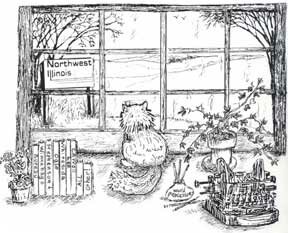Discover rewarding casino experiences. 
|
The large old-fashioned photo album, crowded but neat with photos does tell us something, however. That on reaching the Seattle area in the Great Northwest by 1918 pictures him as an avid outdoors man, the steep mountains and snow not deterring him. There are photos of him rock climbing, on skis and in canoe, tobogganing fishing and shooting. Family and friends accompany him in numbers to give us a clue to his friendly nature (last week’s illustrations). Those images were variously dated in the 1920’s. He still played some baseball as noted of him in baseball uniform. The handsome young man in the studio picture has the photographers stamp, “Cedar Rapids” so if taken while playing ball there with the “Bunnies,” he’d have been twenty-three at that time, 1896-’97. A handsome lad, our Dud. Information about his career states that he managed the Spokane team in 1901. That acquaintance with the Northwest may have led him to return when his ball playing ceased. The sources of these photos, Evie Mims and Dana Graves, did not have any idea either of how and why Dudley ended up in the Far West from his Midwest roots. The only thing that comes to mind is that in the late 1890’s and early 1900’s there was a well-sized exodus of Lanark area residents.
Freight cars were loaded with furniture and goods to be delivered in the region surrounding Sunnyside, Washington. That continued sporadically for a number of years. It was well-planned and organized. All of these people would have been acquainted with the Risleys and would have welcomed all the family when visiting. Time will reveal the facts, perhaps. On appearing in Seattle by 1918 he was involved with teams both playing and coaching. The photo from the “Seattle Times” is in 1931 and probably an “Old Timers Ball Game” of which Dud was a part according to research information. He is second from the right.
During the late 1920’s he apparently had some time on his hands because while Googling on the internet my informants(!) discovered a story with his name as part of a biography written about Vida Isherwood who was the daughter of the editor of the “Tampico Tornado” and wife, George and Fredrika Risley Isherwood, she his Aunt Vida thus his cousin. The two of them were on some excursion across Iowa to visit in Nebraska. When crossing the state line, however, they were stopped by the police who had received a telephone tip saying from the caller that they might be Bonnie and Clyde, two notorious gangsters of the era ... The car resembled theirs. As a reason to stop them the police told them they might be committing the Mann Act, much-used then to prevent young women from being taken across the state lines for illicit purposes. When the facts were sorted out, of course, they were released but it made for an exciting story when the families got together.
It was through the assistance of the Tampico Historical Society that all these pictures came to us just in time for the Sesquicentennial book of Lanark history. They contacted a local woman who knew someone in Texas related to the Isherwoods or Risleys and they contacted her who in turn talked to her daughter in Washington State who actually lived in Dudley Risley’s house, senior and junior. There were boxes of theirs stored in the basement ... All have been so helpful. It was quite a treasure trove. Thanks all, and to Janie Dollinger, Kathie Carroll and Ramona Koning for their emailing and googling and all that technological stuff! Such a good time learning about a Person from the Past whose personal history was a little less ordinary than that of most of us. Dozens of others are touched upon in the Lanark book. The accomplishments of many will surprise you. See the newspapers for places and times to acquire the book. It’s Great! It is thought that he settled in the Seattle area in about 1918. He became foreman of the north King County Road District. During World War II he worked at Todd Shipyards. He had married Isabel McDonald who was the sister of Evie McDonald Mims’ father so not a blood relation to the Risleys but still Dudley was her uncle.“Wizzie,” as Isabel was nicknamed, and Dud had one son, Dudley C., Jr. He became a purser on a cruise ship plying the waters between Seattle and Alaska. He inherited the home pictured here from the senior Risley and he and his wife, having no children willed it to Evelyn Mims who in turned passed it on to her daughter, Dana. This succession of family was responsible for the album and large baseball pictures being available. What other treasures might be “out there?” Dudley Risley died September 9, 1950. He was cremated and interred in the Seattle area. His obituary read that he was survived by three sisters: Lillian deNordendorf, Rockford, Illinois; Pauline Puterbaugh, Polo, Illinois and Minnie Behringer, Spokane, Washington. His parents are buried in the Lanark Cemetery, they having passed in 1893 and 1911, John and Louisa. His brother, Bert, is also buried here, he having passed in May, 1950, just months before Dudley. We appreciate the family having made their homes here to add a different accent to the stir of the hometown.
|









